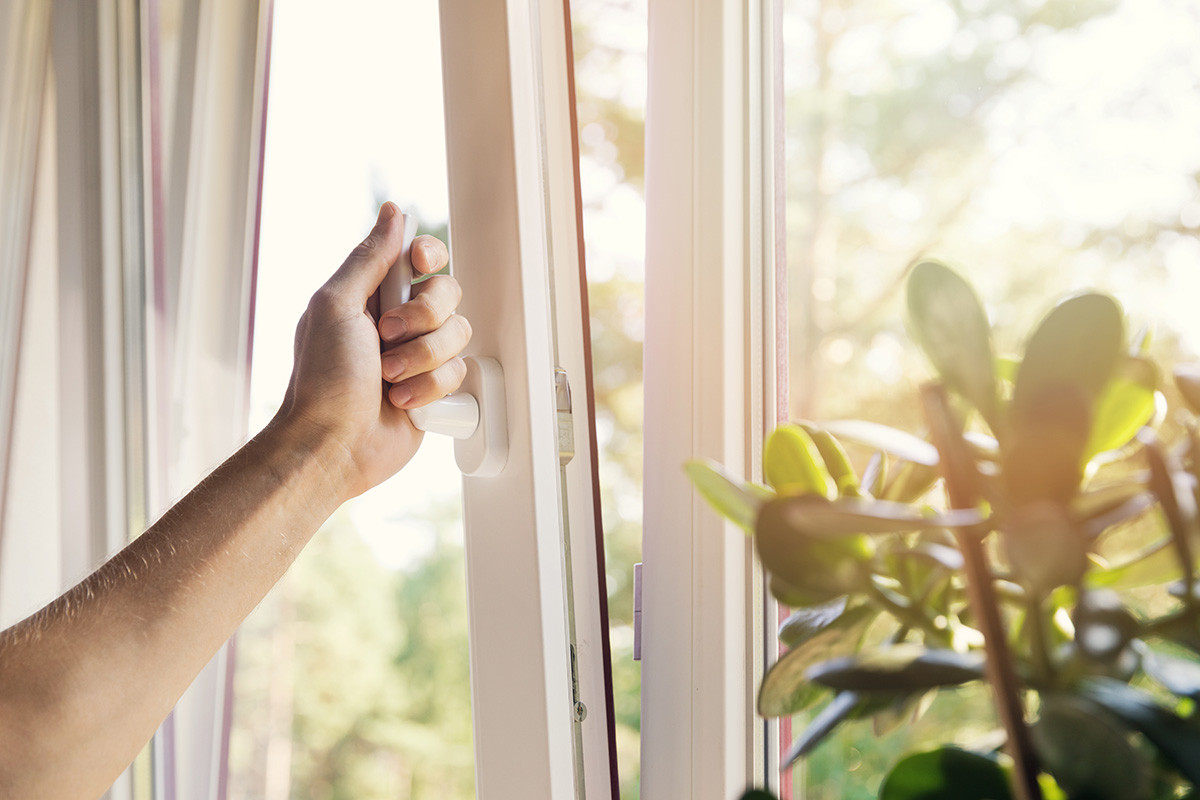Ventilation is key to reducing the risk of transmitting the Corona virus if sharing an office with others. This can result in "temperature fights" among colleagues. Which building type does best in keeping peace and well-being?
Aerosols quickly accumulate in closed indoor spaces and are distributed throughout the room. Aerosols are a possible transmission path for the Coronavirus. Long-term stays in small, poorly or unventilated rooms increase the risk of aerosol transmission. Regular ventilation can significantly reduce the risk of infection with the Coronavirus, according to the WHO.
Ventilate indoor spaces regularly and thoroughly
Fresh air enters the room through ventilation, which can lower the aerosol concentration. The more fresh air you let in, the more the aerosols are diluted in the room air. Fresh air also generally ensures good air quality in the room and avoids mold. At low temperatures, the air exchange doesn't have to take too long, but it should ensure that the stale air is removed from the room and oxygen-rich, drier air is let in. It is therefore recommended to open the windows completely at least 3 times a day, even in winter. The more people are gathering – for meetings or in private – the more you should ventilate.
The research team compared the relation between ventilation behaviour and construction type by simulating air circulation in different house types. Insulated houses with massive walls, due to their high storage mass, ensured that the room temperatures kept the temperature much higher during the ventilation cycles as in houses with a lower weight of the wall. It was also found that in houses with solid walls – such as concrete houses and full brick houses – after the windows were closed, the room temperature reached the preset target value of 21 ° C more quickly than it was the case in the “lighter” houses like for example wooden frame constructions.
Research method
In December 2019, the windows in all insulated houses with the exception of the aerated concrete house were opened completely for 30 minutes each (shock ventilation) - during the ventilation phase as well as before and after the room temperature was recorded by a temperature sensor. In November 2020, a ventilation scenario based on the current recommendations (Covid 19) was carried out. For this purpose, the windows in the insulated houses (one house per house type) were opened for 15 minutes, then closed for 30 minutes, then opened again for 15 minutes, then closed again for 30 minutes and then opened again for 15 minutes. The room temperatures were recorded throughout the cycle.
Disclaimer: This article is not a health recommendation but solely focuses on the effect of ventilation on the room temperature.


